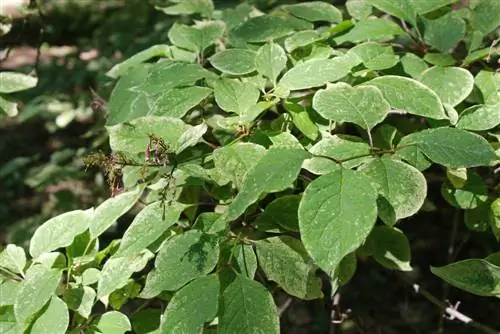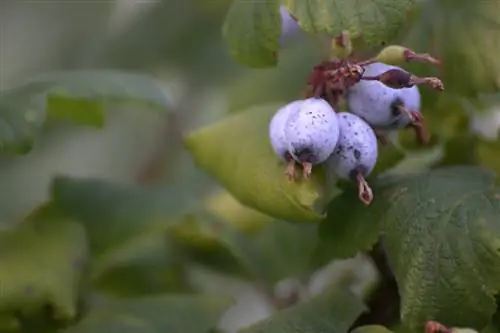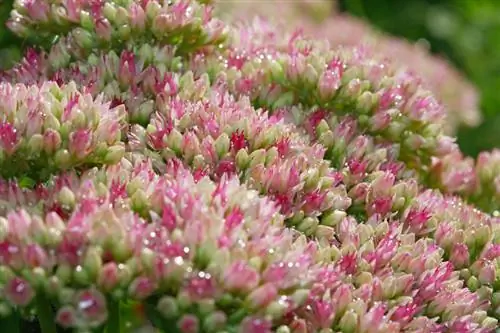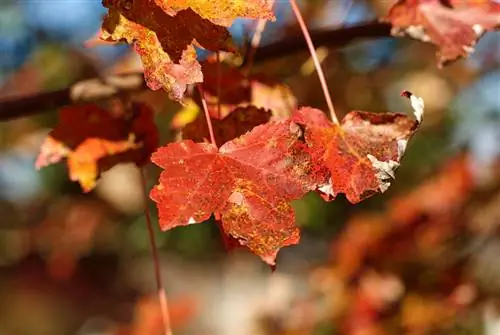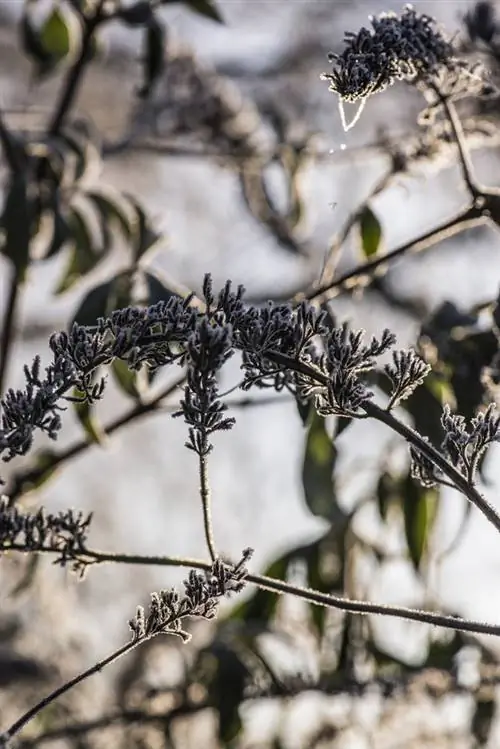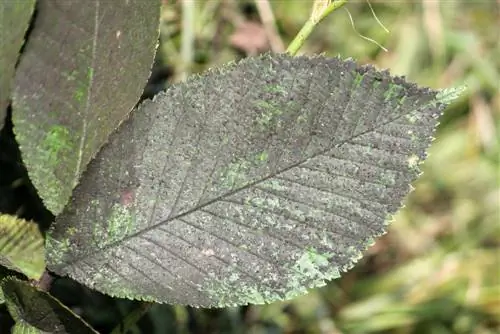- Author admin [email protected].
- Public 2023-12-16 16:46.
- Last modified 2025-01-23 11:21.
As robust as lilacs usually are, the shrub is also sensitive to fungal infections. For this reason, the tree should always be in an airy, sunny and not too humid location. In addition, only thoroughly sharpened and disinfected instruments should be used when cutting - infections often spread through dirty secateurs or saws.
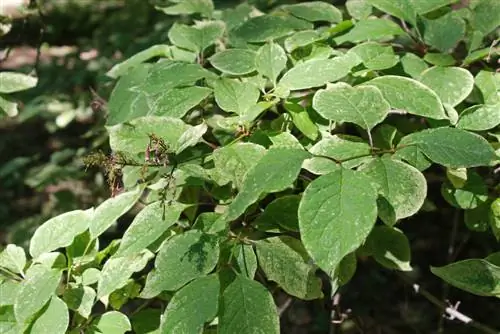
What can you do against fungal infestation on lilacs?
When a lilac is infected by fungus, discolored leaves, shoot wilting and leaf fall are often visible. Infected plant parts should be removed and disposed of. A preventive spray treatment of field horsetail, tansy or garlic strengthens the bush and can prevent renewed infestation.
Which signs indicate fungal infestation
You often first notice a fungal infection by a change in the leaves. These suddenly develop brown or yellow spots, dry up completely and eventually simply fall off. Some fungi also cause whitish or gray deposits, which can affect not only the leaves but also the primarily young shoots. Depending on the cause of the infection, the shoots will eventually wilt and individual branches will die. Other fungi (e.g. honey fungus) mainly attack the roots. Not every fungal infestation needs to be treated urgently, and not every infection threatens the he alth and survival of the affected lilac.
Which fungi most often attack lilacs?
Mildew fungi (Microsphaera syringae), for example, are comparatively harmless, even if the white or gray fungal growth on the leaves and shoots looks very unsightly. Gray mold, which is caused by Botrytis fungi, also causes a gray fungal lawn. Other common fungal diseases on lilacs are these:
- Palelustre disease: caused by Chondrostereum purpureum, often only clearing helps
- Ascochyta leaf spot: caused by Ascochyta syringae, recognizable by large gray leaf spots with brown edges and shoot rot
- Lilac rot: caused by Gloeosporium syringae, large parts of the leaf blade have brown spots
- Leaf burn: caused by Heterosporium syringae, large gray-brown leaf spots with often velvety surfaces
- Leaf spot: Septoria syringae causes yellow-brown spots
- The ascomycete Phyllosticta syringae damages both leaves and shoots.
- Wilt disease: caused by various Verticillium fungi, characteristics: brown leaves, shoot wilt, leaf fall
What should you do if you have a fungal infection?
The different fungal infections are basically all treated in the same way:
- Remove the affected leaves and dispose of them with household waste.
- Carefully sweep up fallen leaves from the ground to prevent reinfection.
- Cut the affected plant parts back deep into the he althy wood.
- Treat the lilac with a strengthening decoction of field horsetail, tansy or garlic.
- You can put this on yourself and spray the bush with it regularly.
If a lilac was already sick the previous year, the spray treatment should be carried out at the time of budding in order to avoid renewed infestation - many fungi overwinter in the form of spores near or on the plants.
Tip
If the infestation is severe, fungicides containing copper (€16.00 at Amazon) from gardening stores can also help.

